Preservationists Charge Landmarks Commission Does Real Estate Lobby's Bidding, Violating Law
Around 100 people gathered on a sidewalk near City Hall in Manhattan Tuesday morning to demand changes to the city’s Landmarks Preservation Commission, an agency they said has been “captured” by the real estate industry and is in need of deep reform.

Lynn Ellsworth of Human-scale NYC was an organizer for the rally. Photo by Susan De Vries
Around 100 people gathered on a sidewalk near City Hall in Manhattan Tuesday morning to demand changes to the city’s Landmarks Preservation Commission, an agency they said has been “captured” by the real estate industry and is in need of deep reform.
“We’ve been fighting this fight throughout the city and calling the LPC for what they’re worth, just another arm of the real estate industrial complex,” City Council Member for lower Manhattan Chris Marte told the crowd. “Historically it’s been Landmarks that have kept the real estate industry accountable, it was Landmarks that protected our neighborhoods, our buildings, the character of our communities, and now what we see them do is sell it off to the highest bidder.”
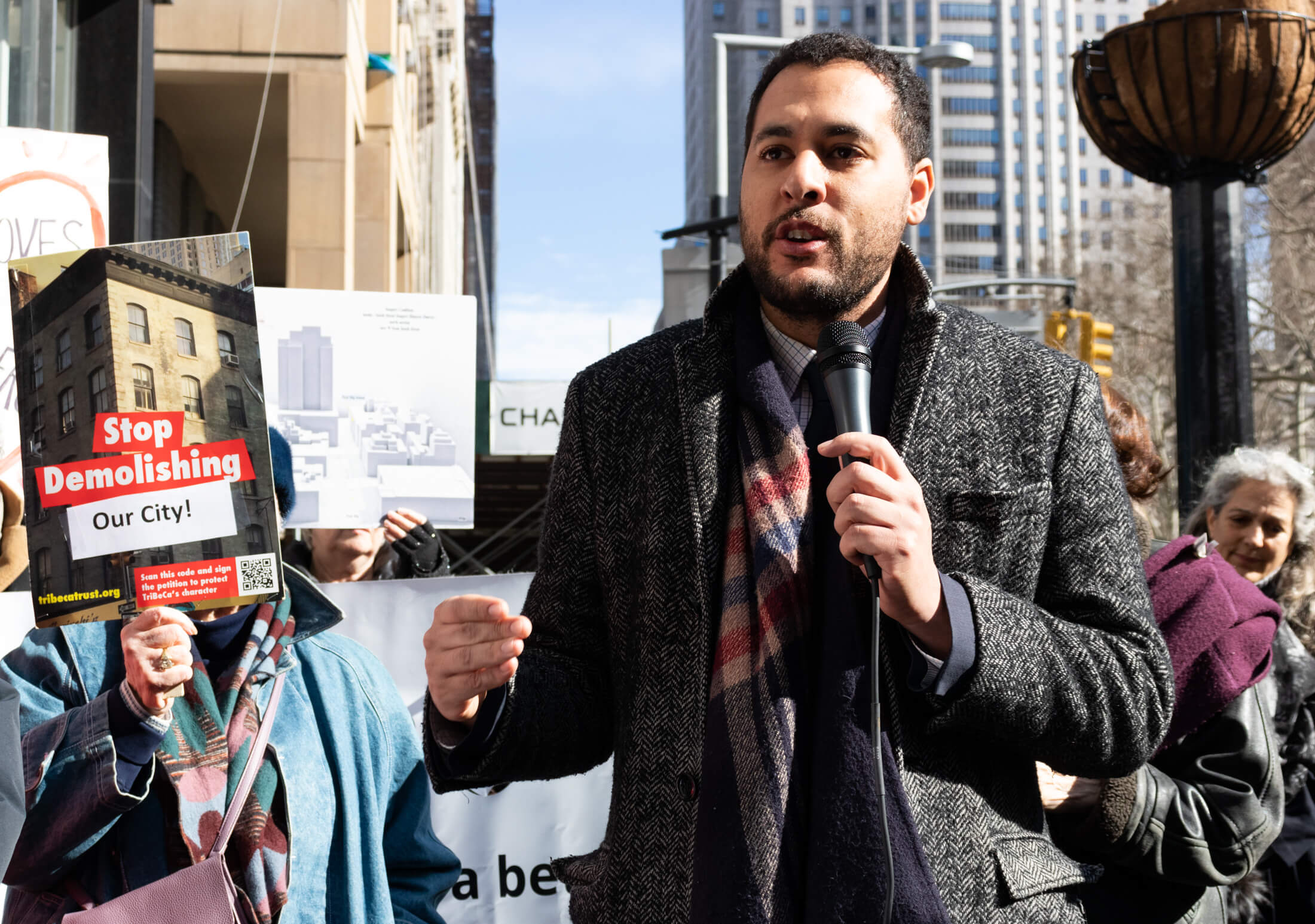
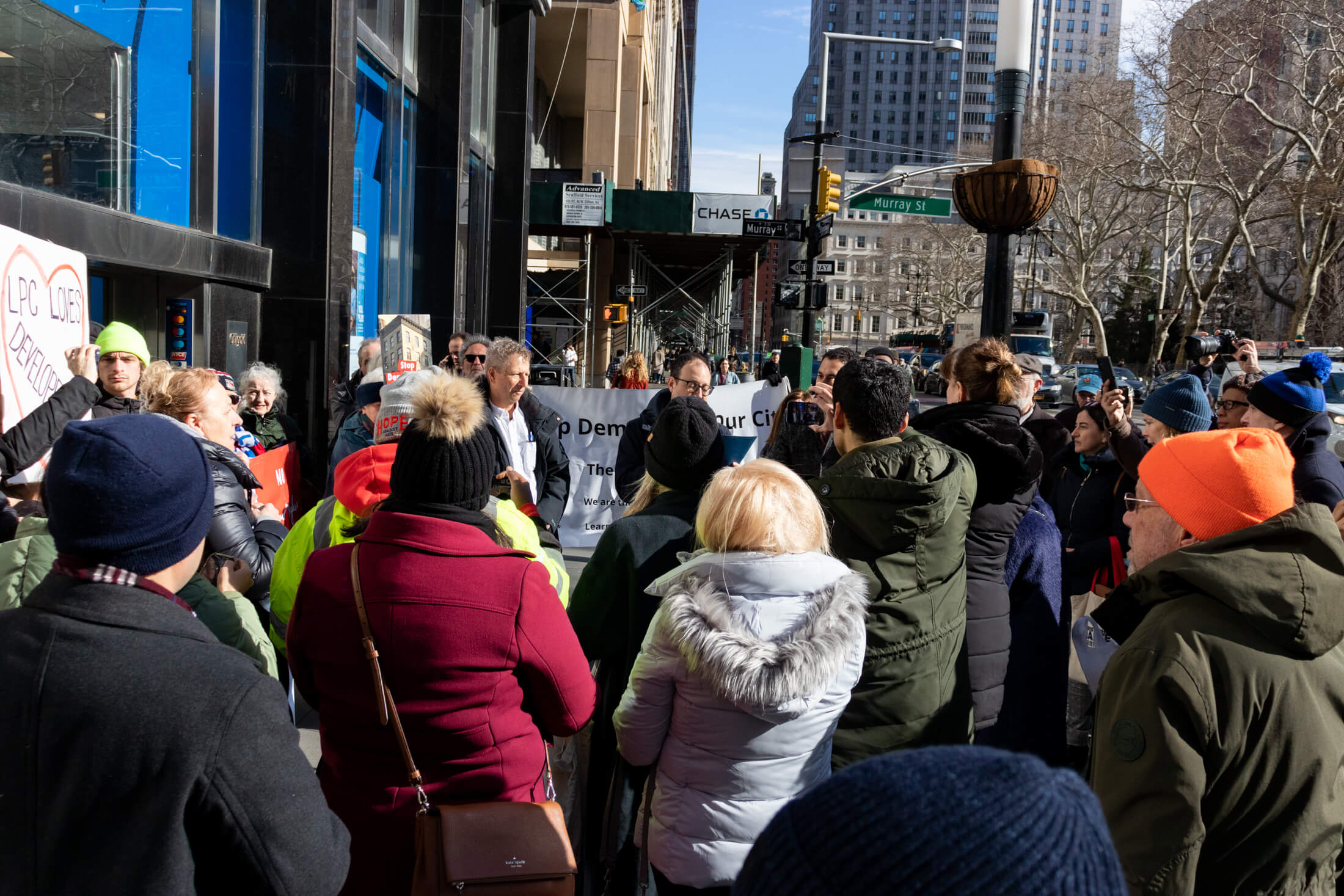
Organized by Human-scale NYC, a citywide coalition of community groups focused on planning, development, public space, and preservation issues, the rally gathered elected leaders and 21 civic and community groups from across the five boroughs, including Brooklyn’s Preserve our Brooklyn Neighborhoods, Society for Clinton Hill, Fort Greene Association, and Citizens for Responsible Neighborhood Planning of Fort Greene and Clinton Hill.
The groups accused the LPC of giving one-sided access to the development community, which they said it does not give to the general public, and alleged the commission has failed to protect current landmarks as well as designate worthy new ones. A white paper released by Human-scale NYC to coincide with the rally called for 11 structural reforms to protect the “visual character and history of our city.”
“We’re here to say enough is enough,” Marte told the crowd. “This is a citywide fight. We’re all united no matter where you live – in the South Bronx, in Harlem, in Bed Stuy or lower Manhattan – we’re in this as New Yorkers, as one, fighting against profit to support our people.”
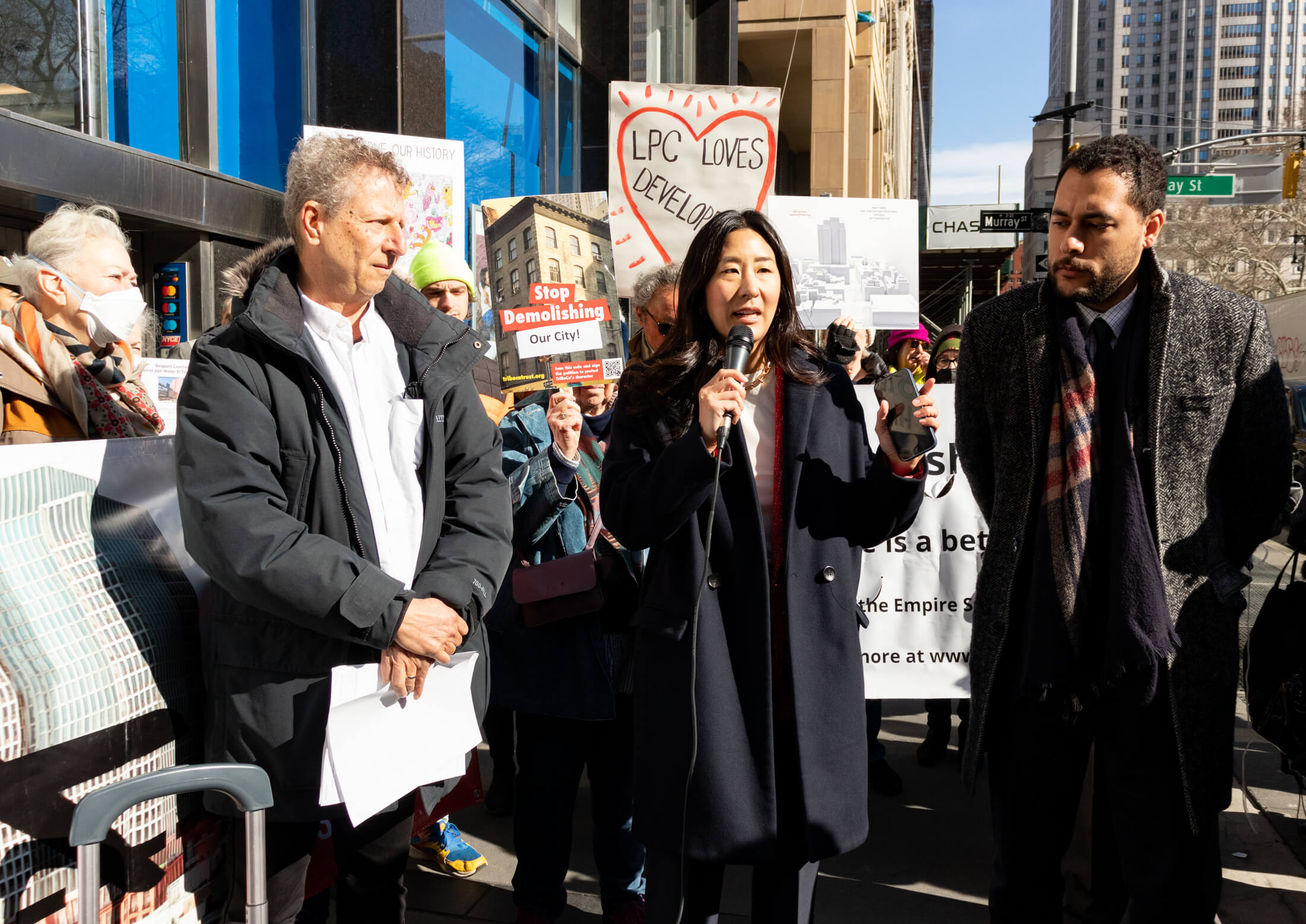
The white paper described what it called “a growing number of disturbing trends” at the Landmarks Preservation Commission, including “regulatory capture — when a regulatory body serves the interests of the industry that is supposed to regulate instead of the wider public good.”
Some of most concerning trends alleged in the white paper are that the LPC chair has accrued “despotic regulatory power,” that the agency is working with developers behind closed doors to their benefit, and that the LPC is unwilling to designate landmarks or historic districts if there is any “buildable space in play.”
The paper calls for 11 reforms, including:
- Protecting the agency from “excessive mayoral and City Planning interference” such as by changing the process for appointing commissioners and the chair.
- Paying commissioners a salary and prohibiting architects on the commission from working for members of the Real Estate Board of New York, or REBNY, a trade association for the industry.
- Changing internal operating rules to restore power to the full commission as intended by the Landmarks Law, such as allowing staff to convey their own, unedited recommendations to the commissioners without the interference of the chair or legal counsel and restoring the old “triage” committee of commissioners for handling requests for evaluation from the public of potentially worthy landmarks.
- Creating an “equal time” rule requiring LPC to publish all meetings with paid lobbyists while also requiring community groups and preservation organizations be given equal access and time.
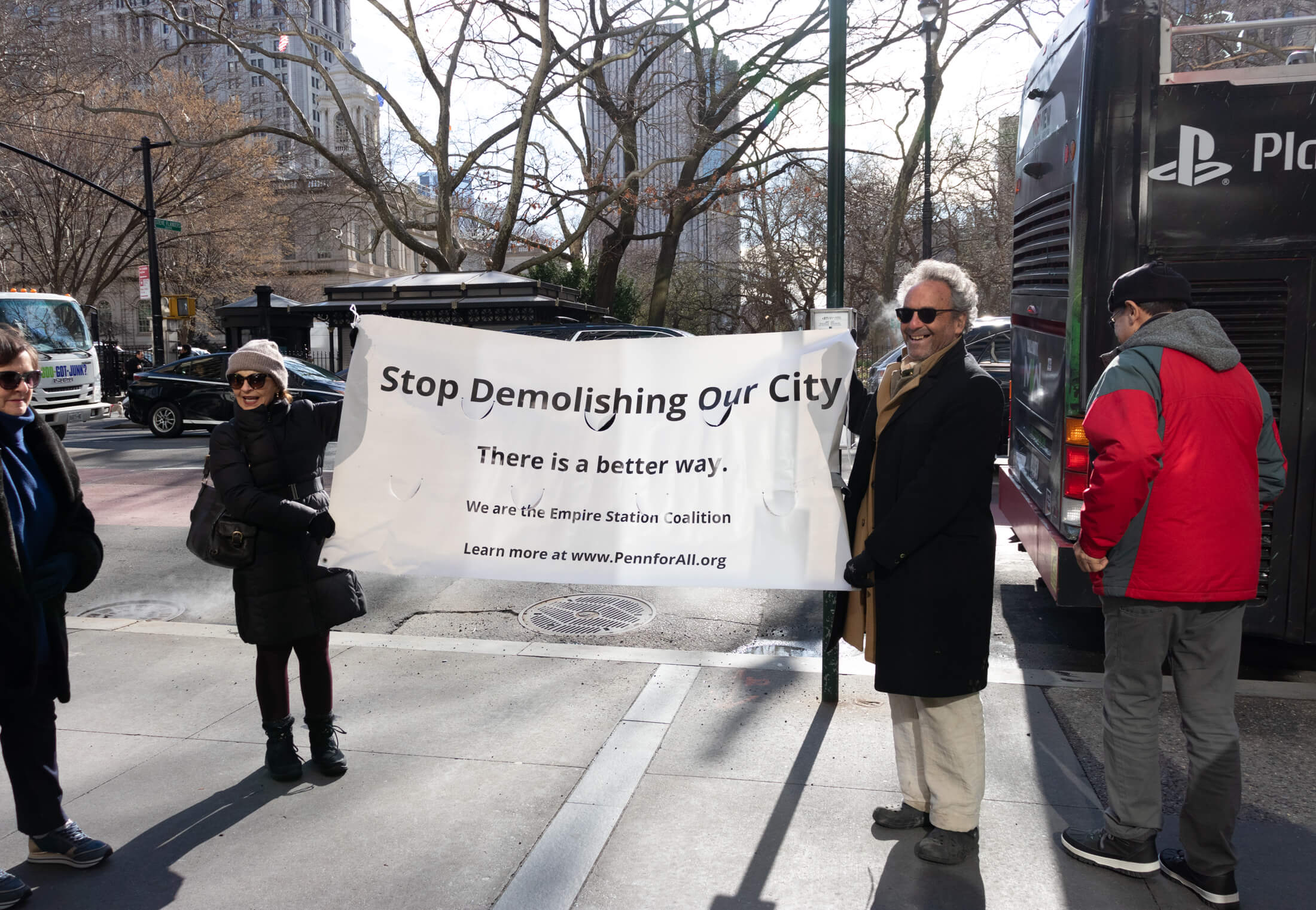
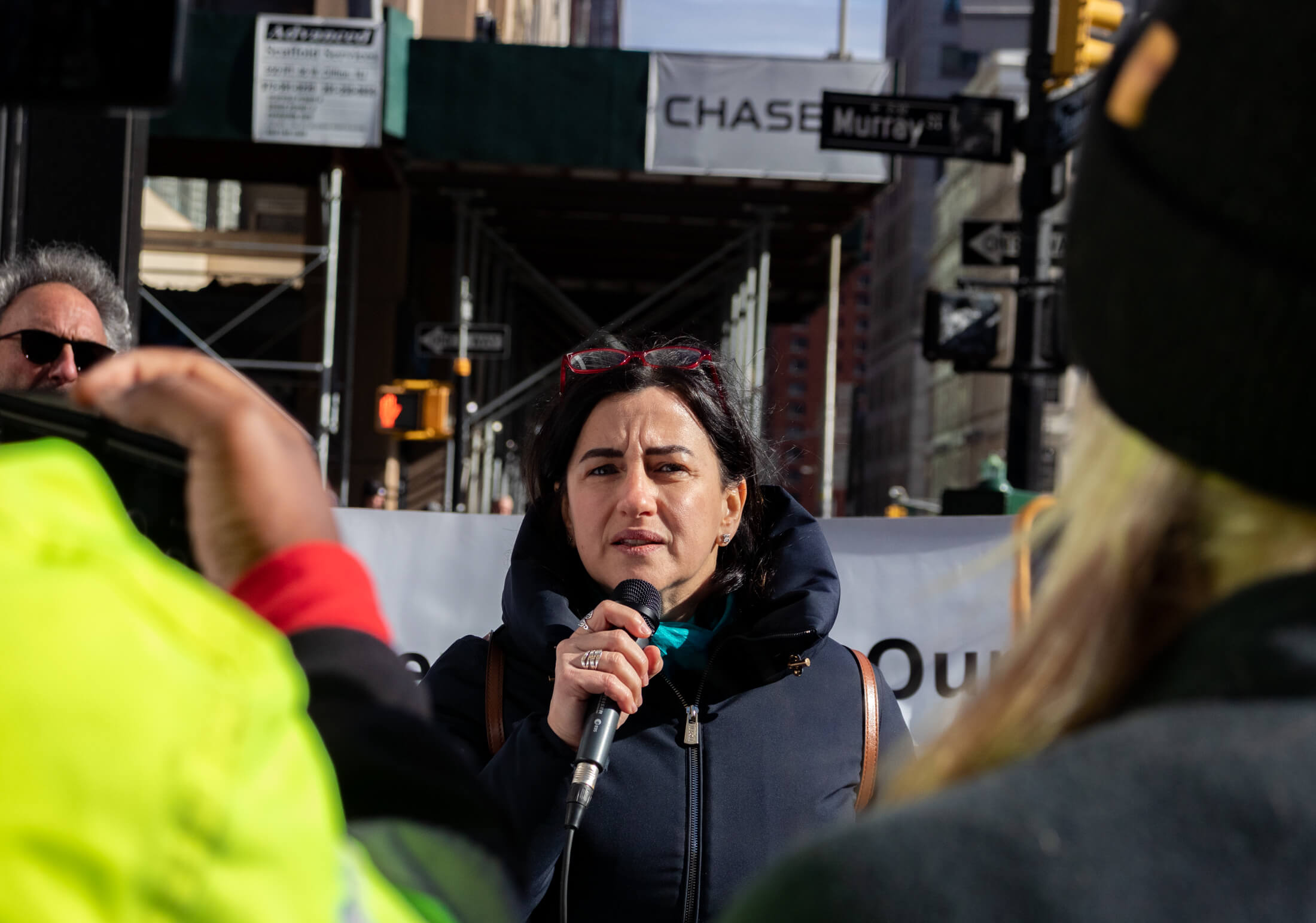
“We have a right to an LPC that is not captured by the real estate industry, to one that works to protect our historic assets for the future, not one that is idiotically managed, or thinks it’s ‘managing change,’ in their words, on behalf of REBNY,” Human-scale NYC founder Lynn Ellsworth told the crowd.
“The law directs the LPC, and I quote, ‘to safeguard the city’s historic and cultural heritage for the education, pleasure, and welfare of the people of the city.’ Why aren’t they doing their job? We have proposed…changes that hand power back to the full commission and put the chair into the role of manager of the commission, rather than as an unfettered despot. We are a democracy, not a monarchy, and we must stop demolishing our city.”
In recent years, a number of LPC decisions concerning Brooklyn sites have left locals and preservationists calling for action, including the demolition of the Jacob Dangler Mansion in Bed Stuy, the approved plans for the Hebron School in Crown Heights, the seeming neglect of the historic and landmarked Wyckoff-Bennett House, 19th century frame houses on Duffield Street in Downtown Brooklyn, and the same street’s Harriet and Thomas Truesdell house.
The demolition of landmarks such as P.S. 31 in the Bronx and early 19th century houses in the Village has also outraged preservationists. Advocates have also questioned controversial decisions such as the failure to create a landmark district in Gowanus and preserve historic buildings around Penn Station.
Also controversial are approvals of renovations and infill for already protected buildings and areas, including a tower at 130 St. Felix Street in Fort Greene, 10 Jay Street in Dumbo, the Dime Savings Bank in Downtown Brooklyn, and the Domino Sugar Refinery in Williamsburg. In Manhattan, the list includes 325 West Broadway, 50 Hudson Street, 14 White Street, and 187 Franklin Street.
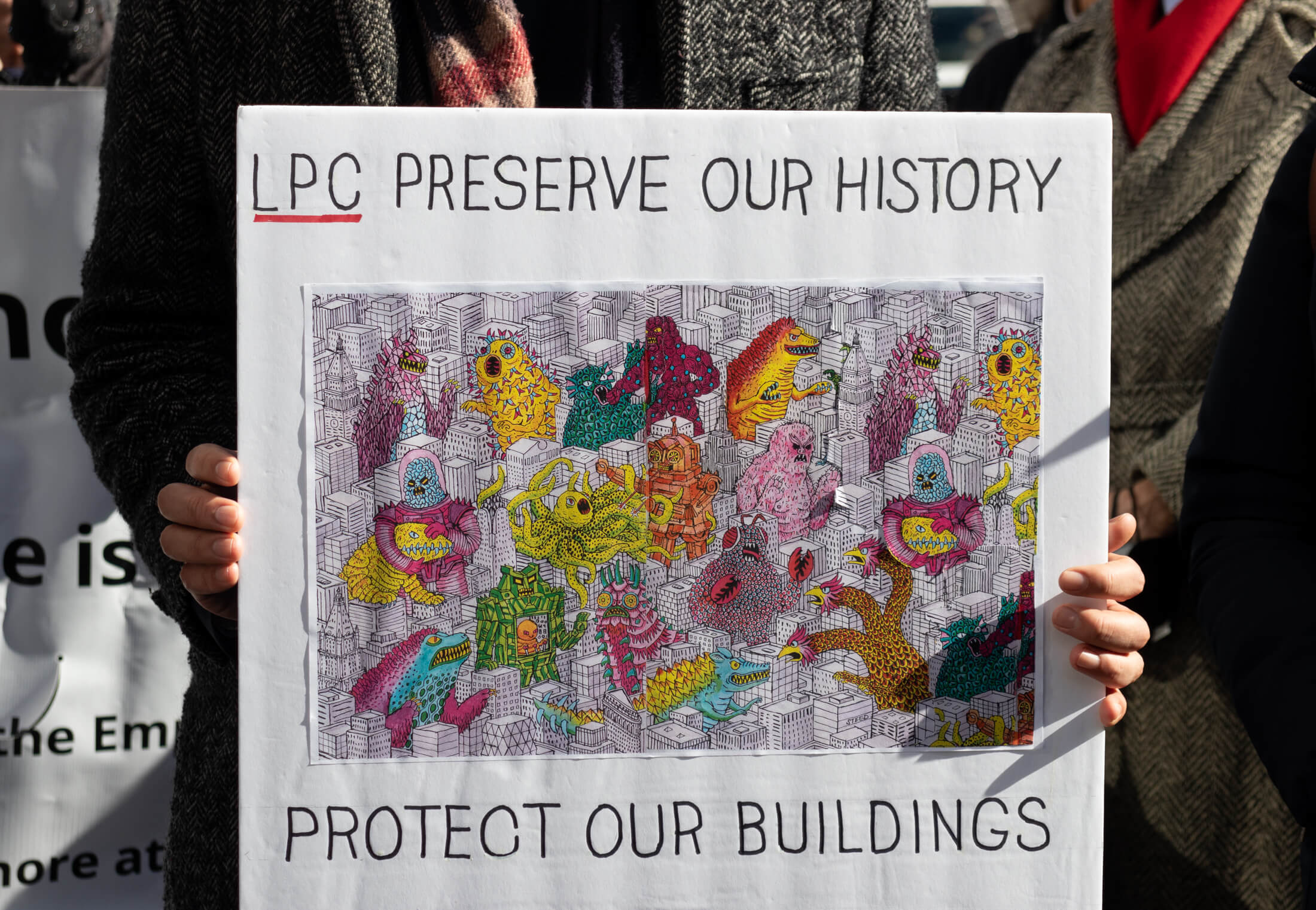
Historic Districts Council Executive Director Frampton Tolbert called on the NYC City Council’s Landmark subcommittee to hold an oversight hearing on the LPC immediately. “We believe that the LPC is in need of reform both in its rules and its processes so that they can accurately reflect the needs of community preservation in New York City.”
Tolbert said on top of reform and increased transparency, HDC also wants to see an increase in designations. He added that this could also have a positive side effect of increasing affordable housing. “Preservation does not impede affordable housing; buildings can be repurposed, and many historic buildings across the city hold affordable units that are increasingly at risk for demolition for larger buildings that bring fewer units and those that are not even affordable,” he said.
There have been concerns about the LPC and its connection to the real estate sector and developers going back decades, and there have been many calls for reform in the past. In the white paper and at the rally, speakers alleged conflicts of interest that stop commissioners, the majority of whom are architects, from being able to fulfill their role with integrity.
While all the speakers urged structural reform, Marte also called for the ouster of the existing commission and the chair. One speaker with inside knowledge countered that would be a mistake and would likely make things worse. Former LPC Commissioner Michael Devonshire, who was recently removed from the commission after 13 years, reassured the crowd the commissioners he had served with were all dedicated to their positions and warned of the consequences of their removal. “Wait until you see what this mayor puts in place,” he said. “Stay angry, stay on this.”
Devonshire said he, along with two other commissioners — John Gustafsson and Adi Shamir-Baron — were “booted” from the commission as the “nay-sayers.” He backed up assertions commissioners have no say in which buildings are to be designated when the requests arrive at LPC, and agreed that major reform of how the commission operates is needed. He also spoke in favor of altering the Landmarks Law to explicitly prohibit real estate industry involvement with the commission.
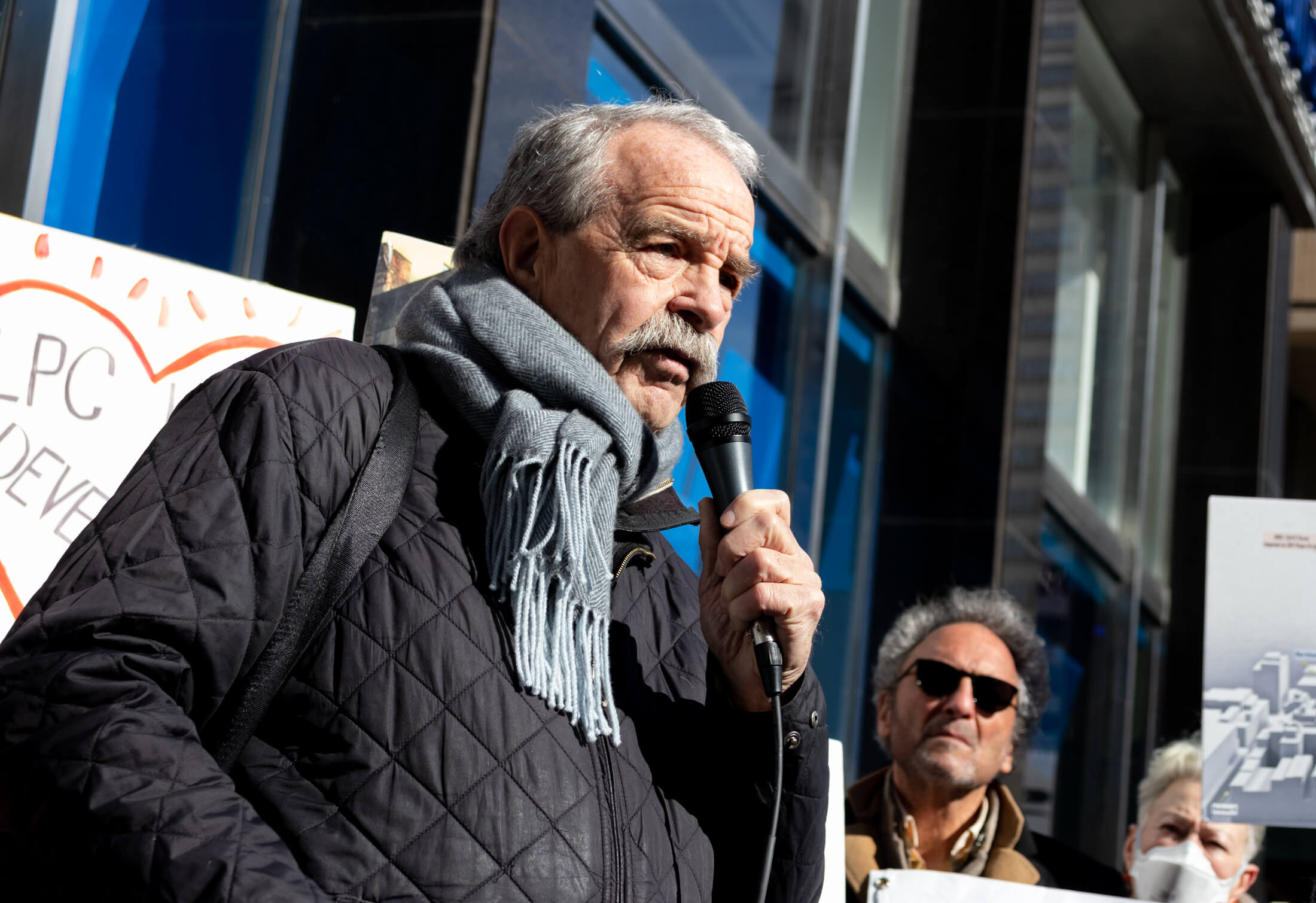
“REBNY has power, but it has nothing to do with the commissioners. It has to do with the administration and the way the Landmarks Law was written, that’s what needs to be changed,” Devonshire said. “The real estate industry needs to get their butts out of the Landmarks Commission, and what has to happen is that law has to change so that they have no say, no say in what happens even at the administration level, which is where it takes place now.”
An LPC spokesperson told Brownstoner after the rally that the agency “is wholeheartedly committed to preserving the city’s historically, culturally, and architecturally significant buildings and neighborhoods.”
“We categorically reject any assertions of conflicts of interest,” she said in an email to Brownstoner. “The commission and staff make thoughtful determinations based on best preservation practices, careful analysis, and thoughtful review. We appreciate feedback from communities and elected officials and are happy to work together with them to make sure we are doing the best we can to protect and preserve the city’s historic built environment.”
The spokesperson said the agency is focused on serving the needs of all New Yorkers equally, and that all decisions and recommendations made by staff and commissioners are based on decades of experience in applying the best preservation practices, thoughtful analysis and applicable preservation policies. Commissioners are fully vetted by the Conflict of Interest Board before being appointed and stay in full compliance with COIB requirements while serving. The role of the chair, the spokesperson said, is to oversee the agency and its allocation of resources, directing the agency’s staff in identifying eligible buildings, districts, and sites, and undertaking outreach necessary to ensure successful designations.
The groups behind the rally were Historic Districts Council, Save our Seaport, Human-scale NYC, Bowery Alliance of Neighbors, SoHo Alliance, Berry Street Alliance, Stop Sunnyside Yards, CUEUP, Preserve our Brooklyn Neighborhoods, Metro Area Governors Island Coalition, Society for Clinton Hill, Fort Greene Association, Broadway Residents Coalition, Seaport Coalition, Moving Forward Unidos, Inwood Preservation, Youth Alliance for Housing, Anti-displacement NYC, Citizens for Responsible Neighborhood Planning of Fort Greene and Clinton Hill, Committee for Environmentally Sound Development, and Lower East Side Dwellers.
Brownstoner reached out REBNY for comment, but did not hear back by the time of publication.
[Photos by Susan De Vries]
Related Stories
- Shaken by Recent Decisions, Preservationists Say Landmarks Commission Is Not Doing Its Job
- Neighborhood Groups Call for Ouster of Landmarks Chair Srinivasan and a Halt to LPC Rule Changes
- After Outcry, Mayor Appoints Preservationist as New Chair of Landmarks Preservation Commission
Email tips@brownstoner.com with further comments, questions or tips. Follow Brownstoner on Twitter and Instagram, and like us on Facebook.




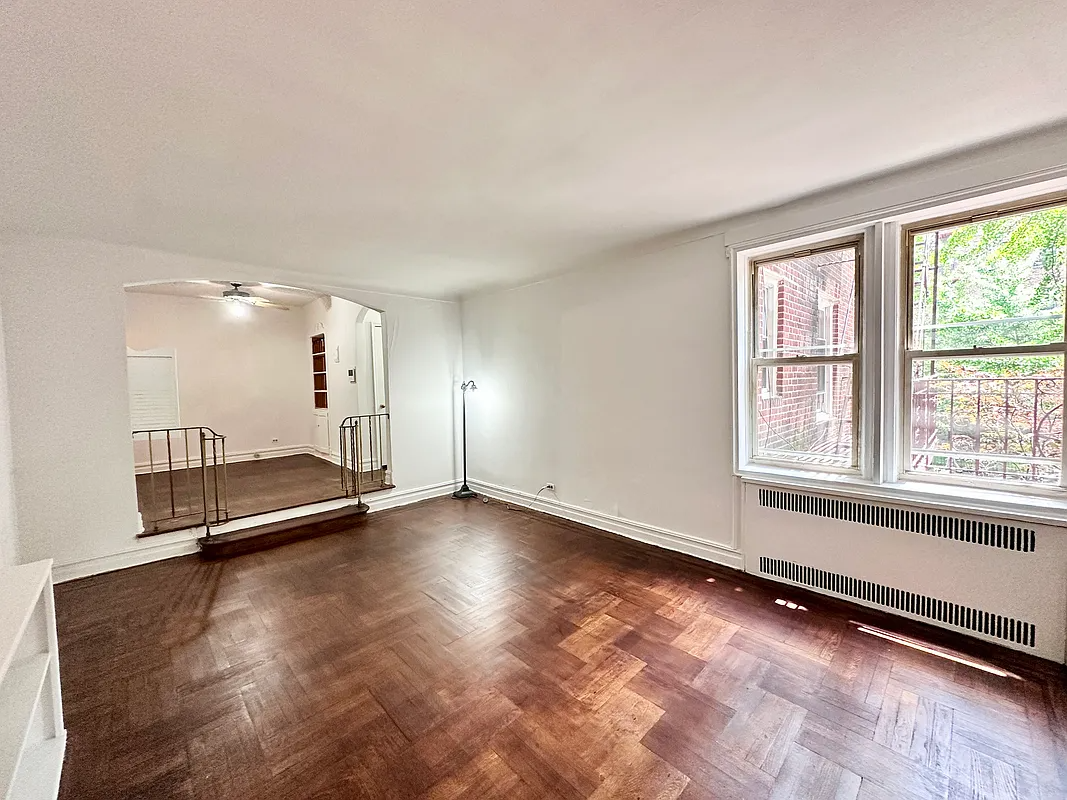
What's Your Take? Leave a Comment